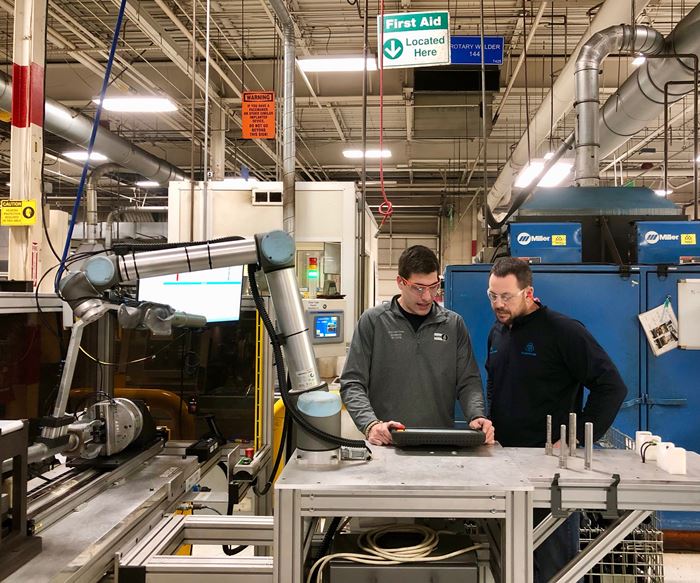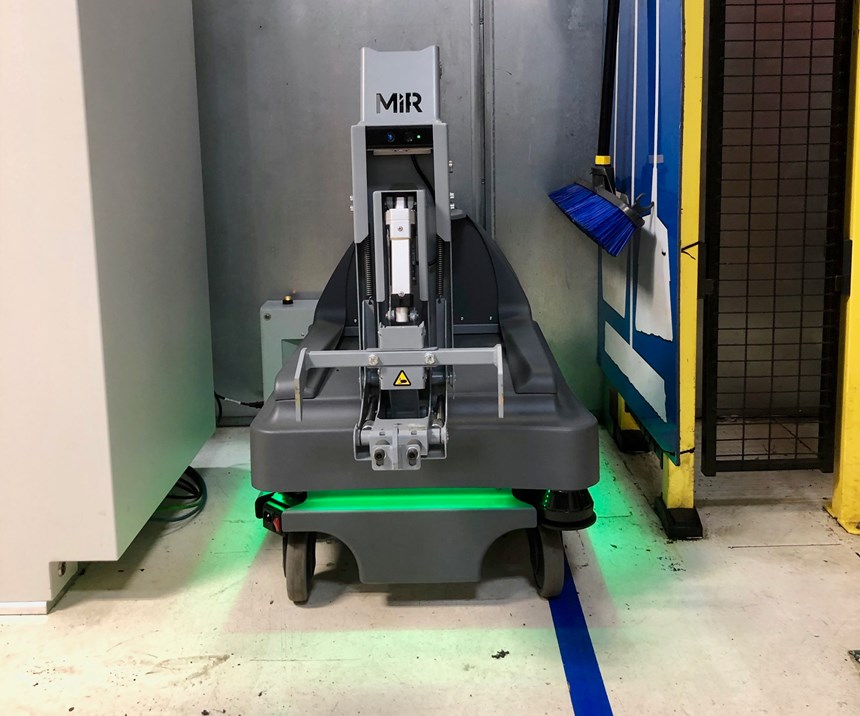Share




[Editor's note: We have posted a more recent article on this facility and this application. Here is our latest on Thyssenkrupp Bilstein's advance with collaborative robot (cobot) automation.]
The part specifications for luxury automobiles are so exacting that an optional sun roof can, due to the slight increase in the weight it adds, require that the car have a different model shock absorber than if the vehicle had no sunroof.
Thyssenkrupp Bilstein knows about exacting demands. The German multinational is perhaps the premier suspension supplier for the performance and luxury auto market. The suspension systems manufactured at Bilstein’s American headquarters in Hamilton, Ohio, can be found on high-end sedans, trucks, vans, off-road vehicles and sports cars for the Big-Three automakers, Toyota and Nissan, as well as Mercedes-Benz and new electric vehicle startups. In short, the company positions itself as the market leader for advanced fully active and semi-active suspensions worldwide.
For Bilstein, the changeable nature of its customers’ demands requires lean manufacturing processes and the ability to constantly adapt. During a recent interview and plant tour with Fabian Schmahl, Thyssenkrupp Bilstein of America’s president and chief executive officer, it became clear that collaborative automation is becoming a key tool for what we will call Bilstein’s adaptive growth.
In just 10 years, Bilstein’s Ohio plant has tripled its size and quadrupled its workforce to 800 employees. Mr. Schmahl credits that growth to widespread innovation, and specifically to management’s dedication to processes associated with Industry 4.0 initiatives. To sustain that growth and keep its current workforce happy, Bilstein has made a commitment to its employees to increase transparency at the company while decreasing dull, repetitive tasks. This is partly why you’ll find eight cobots (slang for collaborative robots) from Universal Robots (UR) spread across four stations at the plant, as well as two autonomous intelligent vehicles (AIVs) that cautiously meander through the aisles, performing mundane tasks such as taking out the trash.
This story is a snapshot of what safe, collaborative automation looks like today at Thyssenkrupp Bilstein of America, which might be different than you imagine. That is because the strategy that Mr. Schmahl and his employees have taken is to automate the easiest processes first, including non-value-added tasks such as delivering carts full of parts or hauling away scraps. This is not to say that Bilstein does not have complex, automated robotic cells that look like a postcard for advanced manufacturing, but its cobots and AIVs offer different value propositions to the company. They are flexible automation solutions that can be redeployed where needed. And as you’ll see in the photos above, sometimes that means working side-by-side with a human, and sometimes it does not.
Related Content
-
4 Steps to a Cobot Culture: How Thyssenkrupp Bilstein Has Answered Staffing Shortages With Economical Automation
Safe, economical automation using collaborative robots can transform a manufacturing facility and overcome staffing shortfalls, but it takes additional investment and a systemized approach to automation in order to realize this change.
-
Lean Approach to Automated Machine Tending Delivers Quicker Paths to Success
Almost any shop can automate at least some of its production, even in low-volume, high-mix applications. The key to getting started is finding the simplest solutions that fit your requirements. It helps to work with an automation partner that understands your needs.
-
How to Accelerate Robotic Deburring & Automated Material Removal
Pairing automation with air-driven motors that push cutting tool speeds up to 65,000 RPM with no duty cycle can dramatically improve throughput and improve finishing.




































